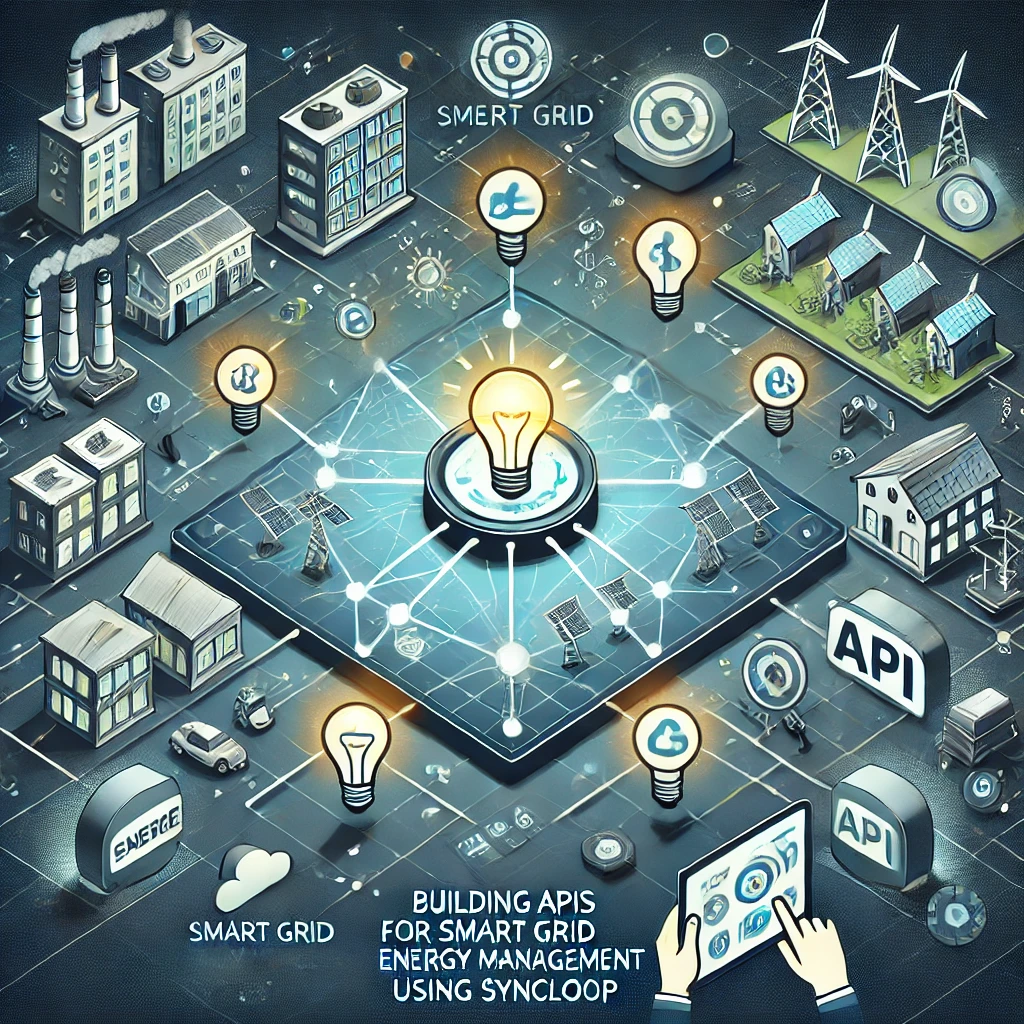Building APIs for Smart Grid Energy Management Using Syncloop

Syncloop offers a powerful platform to design APIs tailored for smart grid energy management. With features like real-time data processing, workflow automation, and enhanced security, Syncloop simplifies the complexities of managing interconnected energy systems. This blog explores how to build APIs for smart grid energy management using Syncloop and highlights best practices for implementation.
The Role of APIs in Smart Grid Energy Management
APIs drive smart grid operations by enabling:
- Real-Time Communication: Facilitate data exchange between energy producers, consumers, and intermediaries.
- Demand Response: Enable dynamic energy distribution based on real-time consumption data.
- Predictive Maintenance: Monitor grid components and forecast failures to prevent downtime.
- Data Integration: Aggregate and analyze data from IoT devices, sensors, and external systems like weather forecasts.
- User Engagement: Provide consumers with insights into energy usage and empower them to control consumption.
Challenges in Designing APIs for Smart Grids
- High Data Volume: Managing massive amounts of real-time data from distributed grid components.
- Low-Latency Requirements: Ensuring fast data processing for time-sensitive operations like fault detection.
- Security: Protecting grid infrastructure and sensitive user data from cyber threats.
- Integration Complexity: Connecting APIs with legacy systems and modern IoT devices.
- Scalability: Supporting a growing number of users, devices, and energy assets.
How Syncloop Simplifies API Development for Smart Grids
Syncloop provides tools and features to address the unique needs of smart grid systems:
- Real-Time Data Processing: Handle high-frequency data streams with minimal latency.
- Dynamic Scaling: Adjust resources automatically to manage varying workloads.
- Workflow Automation: Automate complex processes like load balancing and fault detection.
- Advanced Security: Implement encryption, authentication, and access controls to secure APIs.
- Integration Support: Connect seamlessly with IoT devices, external APIs, and data platforms.
- Monitoring and Analytics: Track API performance and grid metrics in real time.
Steps to Build Smart Grid APIs with Syncloop
Step 1: Identify Core Functionalities
Define the key functionalities your smart grid APIs will support, such as:
- Real-time energy monitoring and reporting.
- Predictive maintenance and fault detection.
- Demand response management.
- User consumption analytics and notifications.
Step 2: Design Modular API Endpoints
Create APIs with modular, scalable endpoints. Examples include:
- /grid/monitor: Fetch real-time grid performance metrics.
- /grid/demand-response: Adjust energy distribution dynamically based on demand.
- /user/usage: Provide consumers with personalized energy usage reports.
- /device/status: Monitor the health and status of connected grid components.
Step 3: Automate Workflows
Leverage Syncloop’s workflow automation tools to:
- Streamline data aggregation from multiple sensors and devices.
- Trigger automatic alerts for anomalies or faults in the grid.
- Enable real-time load balancing based on energy demand patterns.
Step 4: Enhance Security
Use Syncloop’s security features to:
- Encrypt data during transmission and storage to prevent unauthorized access.
- Authenticate users and devices using secure tokens or OAuth.
- Implement role-based access control (RBAC) to restrict API access based on user roles.
Step 5: Monitor and Optimize
Enable real-time monitoring with Syncloop to:
- Track API performance metrics such as latency and error rates.
- Analyze grid performance to identify bottlenecks or inefficiencies.
- Use insights to optimize API workflows and resource allocation.
Best Practices for Smart Grid API Development
- Prioritize Scalability Design APIs to accommodate growing numbers of users, devices, and data streams.
- Optimize for Real-Time Performance Use efficient data pipelines to minimize latency and improve responsiveness.
- Implement Granular Security Protect sensitive data with robust authentication and encryption measures.
- Leverage AI and Analytics Integrate AI-driven tools for predictive maintenance and demand forecasting.
- Document APIs Thoroughly Provide clear documentation for developers to integrate and use APIs effectively.
Example Use Case: Urban Smart Grid Management
A city-wide smart grid system uses Syncloop to manage energy distribution and monitoring:
- Real-Time Monitoring: Tracks energy consumption and production metrics from distributed sources.
- Demand Response: Automatically balances load during peak hours to prevent outages.
- Predictive Maintenance: Analyzes data from transformers and sensors to predict failures.
- User Engagement: Offers personalized dashboards for residents to track energy usage.
- Security: Implements encryption and RBAC to safeguard sensitive data.
Benefits of Using Syncloop for Smart Grid APIs
- Improved Efficiency: Automate processes and optimize energy distribution to reduce waste.
- Enhanced Scalability: Handle increasing users and data streams with dynamic scaling.
- Better Reliability: Monitor grid performance and predict issues before they occur.
- Increased Security: Protect critical infrastructure with advanced security features.
- Actionable Insights: Use real-time analytics to make informed decisions and improve operations.
The Future of Smart Grid API Development
As the world moves toward sustainable energy solutions, smart grids will play a vital role in optimizing energy management. Syncloop equips developers with the tools to build robust, scalable, and secure APIs, paving the way for intelligent and efficient energy systems.
Image Description
A conceptual illustration showcasing Syncloop’s tools for smart grid energy management APIs, featuring real-time data processing, workflow automation, and advanced security. The image highlights efficient and intelligent energy distribution in modern grid systems.
Back to Blogs